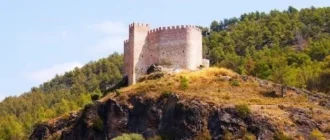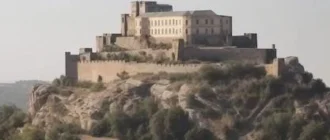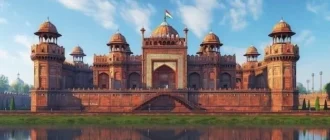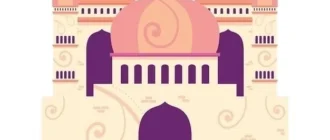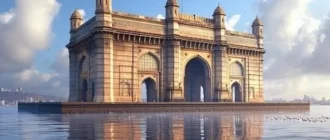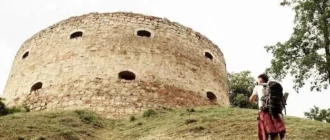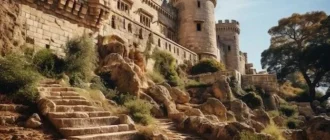A Comprehensive Guide to Lomé’s Top Tourist Destinations
Nestled along the Gulf of Guinea, Lomé, the vibrant capital of Togo, offers a captivating blend of cultural heritage, bustling markets, and scenic beauty. This West African gem invites travelers to discover its unique charm and explore a tapestry of experiences.
Introduction to Lomé
Lomé, the captivating capital of Togo, stands as a vibrant testament to the nation’s rich cultural tapestry and captivating history. Situated along the Gulf of Guinea, this coastal city serves as the nation’s beating heart, pulsating with a unique blend of African traditions and European influences. As Togo’s largest city and principal port, Lomé plays a pivotal role in the country’s economic and cultural landscape.
Lomé’s history is deeply intertwined with colonialism, having been under German rule in the late 19th century before transitioning to French administration. This historical legacy is reflected in the city’s architecture, language, and cultural expressions, adding layers of complexity to its identity. Today, Lomé stands as a melting pot of cultures, where modern life intertwines with age-old traditions, creating a captivating atmosphere for visitors to explore.
The city’s skyline showcases a captivating blend of modern structures and colonial-era buildings, reflecting its evolving narrative. The Grand Marché, a bustling labyrinthine market, stands as a testament to Lomé’s vibrant trading heritage, while the elegant Lomé Cathedral reflects the city’s spiritual side. From the lively beaches to the cultural centers and historical landmarks, Lomé offers a diverse range of experiences that promise to captivate travelers seeking an authentic African adventure.

Attractions
Lomé boasts an eclectic array of attractions that cater to a wide range of interests, offering a glimpse into the city’s vibrant culture, rich history, and natural beauty. Whether you seek to delve into Togolese heritage, experience the energy of bustling markets, or unwind on pristine beaches, Lomé has something to offer every discerning traveler.
For those eager to immerse themselves in the heart of Lomé’s cultural scene, the Grand Marché stands as an unmissable destination. This sprawling market is a sensory overload, bursting with colorful fabrics, aromatic spices, and the lively chatter of vendors. Meanwhile, the Marché des Féticheurs offers a unique glimpse into traditional beliefs, with its intriguing displays of talismans, herbs, and other items used in spiritual practices.
History enthusiasts will find themselves captivated by landmarks such as the Lomé Cathedral, an architectural masterpiece that harks back to the city’s colonial past. The Togo National Museum provides a fascinating journey through the nation’s history, showcasing artifacts and exhibits that highlight Togolese art, culture, and traditions. The Presidential Palace, an imposing symbol of the country’s governance, stands as a testament to Lomé’s political significance.
For those seeking respite from the city’s bustling energy, Lomé’s beaches offer a tranquil escape. Togo Beach, with its golden sands and azure waters, provides the perfect setting for relaxation and recreation. Whether you prefer to soak up the sun, take a refreshing dip in the ocean, or enjoy leisurely strolls along the shoreline, Lomé’s beaches offer a serene escape.
Lomé Grand Marché
At the heart of Lomé’s commercial and cultural landscape lies the Grand Marché, a sprawling and vibrant testament to the city’s enduring trading spirit. This iconic market is a microcosm of Lomé itself, a bustling hub where the sights, sounds, and scents of West Africa converge in a captivating sensory experience. Stepping into the Grand Marché is to embark on a journey through the heart of Togolese daily life, where the rhythmic pulse of commerce sets the pace.
A labyrinthine network of stalls, shops, and alleyways unfolds before the visitor, each turn revealing a new treasure trove of goods. From vibrant textiles and intricately patterned fabrics to aromatic spices and fresh produce, the Grand Marché caters to every need and desire. The air hums with the lively chatter of vendors and customers bartering for the best prices, a symphony of languages and laughter that speaks to the market’s inclusive embrace.
Amidst the bustling crowds, skilled artisans showcase their craft, transforming wood, leather, and metal into intricate works of art. The Grand Marché is not merely a place of commerce; it is a living testament to Togolese creativity and ingenuity, where tradition and modernity intertwine in a vibrant tapestry of craftsmanship. Whether seeking a unique souvenir, a taste of local delicacies, or simply an immersion in Lomé’s vibrant energy, the Grand Marché promises an unforgettable experience.
Marché des Féticheurs
Venturing into Lomé’s Marché des Féticheurs, or Fetish Market, is to step into a realm where spirituality and tradition intertwine. This extraordinary market, unlike any other, offers a glimpse into the heart of West African Vodun, a religion deeply rooted in the belief of spirits residing in natural objects. For the uninitiated, it is a journey into a world both fascinating and mysterious, where animal parts, herbs, and carved figurines hold profound significance.
The air within the Marché des Féticheurs is thick with the scents of dried herbs, animal musk, and incense, creating an atmosphere unlike any other. Stalls overflow with a bewildering array of objects, each imbued with its own unique spiritual significance. Skulls of various creatures, dried chameleons, skins, bones, and feathers are meticulously arranged, each representing a specific power or purpose within Vodun practice. It’s a sight that can be overwhelming, even confronting, for those unfamiliar with the beliefs it represents.
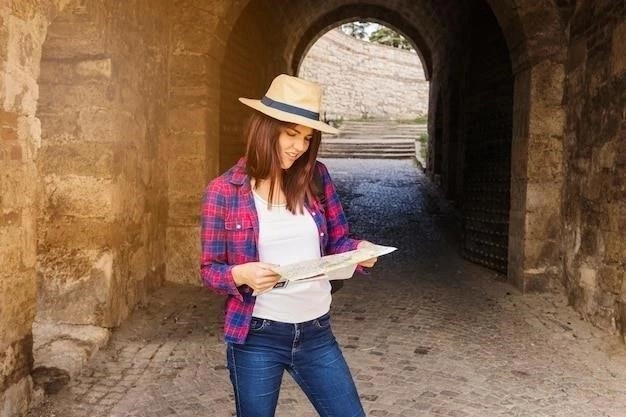
However, it’s crucial to approach the Marché des Féticheurs with respect and understanding. This is not a spectacle, but a place of deep religious significance, where Vodun practitioners, known as féticheurs, gather to source the elements necessary for their rituals and remedies. While photography is generally permitted, it’s essential to ask permission before capturing images of the vendors and their wares. A visit to the Marché des Féticheurs is a powerful reminder of the diversity of human belief systems and the enduring power of tradition in a rapidly changing world.
Lomé Cathedral
Standing tall amidst the bustling heart of Lomé, the Cathedral of the Sacred Heart, more commonly known as Lomé Cathedral, is an architectural testament to the city’s colonial past and enduring spirituality. This striking red-and-white edifice, built in the early 20th century, showcases a captivating blend of German Gothic and Romanesque architectural styles, its twin towers reaching towards the heavens as a beacon of faith and a prominent landmark in the cityscape.
Stepping through the cathedral’s grand entrance is to enter a sanctuary of peace and tranquility, a stark contrast to the vibrant energy of the streets outside. The interior is equally impressive, featuring soaring vaulted ceilings, intricate stained-glass windows that bathe the nave in a kaleidoscope of colors, and a serene ambiance that invites contemplation and reflection. The air whispers with the echoes of past prayers and hymns, a testament to the cathedral’s enduring role as a spiritual center for Lomé’s Catholic community.
Whether a devout Catholic or simply an admirer of architectural grandeur, Lomé Cathedral offers a captivating glimpse into the city’s rich history and cultural heritage. Take time to wander through its hallowed halls, admire the intricate details of its design, and experience the sense of peace that pervades this spiritual oasis in the heart of Lomé. A visit to this architectural gem is a journey through time and a testament to the enduring power of faith and artistry.
Togo National Museum
Nestled within the heart of Lomé, the Togo National Museum stands as a repository of the nation’s rich history, art, and cultural heritage. Housed within the Palais de Congrés, a striking example of post-colonial architecture, the museum offers visitors a captivating journey through time, illuminating the story of Togo from its pre-colonial past to the present day. It serves as a vital cultural institution, preserving and showcasing the nation’s patrimony for generations to come.
Within its well-curated halls, visitors will encounter a diverse collection of artifacts, each whispering tales of Togo’s rich and complex past. Ancient pottery shards and intricately crafted masks offer glimpses into the traditions and beliefs of pre-colonial societies. Exhibits dedicated to the colonial period shed light on the country’s transformation under German and French rule, while displays of contemporary art showcase the vibrant creativity of Togo’s artistic landscape.
The Togo National Museum is more than just a repository of objects; it is a dynamic center for education and cultural understanding. Through its exhibitions and programs, the museum aims to foster appreciation for Togo’s rich cultural heritage among both local communities and international visitors. Whether seeking to deepen your understanding of Togolese history, explore the vibrant artistry of the nation, or simply immerse yourself in a world of cultural discovery, the Togo National Museum promises an enriching experience.
Presidential Palace
Standing as a prominent landmark in Lomé’s cityscape, the Presidential Palace commands attention with its imposing presence and stately grandeur. This architectural embodiment of Togolese power and governance stands as a symbol of the nation’s sovereignty and serves as the official residence and workplace of the Togolese president. While not typically open for public tours due to security reasons, the Presidential Palace remains a significant point of interest for visitors seeking to gain a deeper understanding of Togo’s political landscape.
The palace’s architecture reflects a blend of modern and traditional African design elements, conveying a sense of both strength and elegance. Its expansive grounds, meticulously manicured lawns, and vibrant tropical flora create an aura of serenity and order, a stark contrast to the bustling city that surrounds it. The palace’s imposing gates, often guarded by watchful sentinels, hint at the power and authority that reside within its walls.
Even from afar, the Presidential Palace stands as a testament to Togo’s journey as an independent nation. While access to its interior is restricted, the palace’s exterior, with its stately architecture and well-maintained grounds, offers a glimpse into the world of Togolese governance and the symbolic heart of the nation. A drive or stroll past this landmark provides a moment to reflect on Togo’s political landscape and the seat of power from which the nation is guided.
Centre Culturel Français
A vibrant hub of cultural exchange and artistic expression, the Centre Culturel Français in Lomé stands as a testament to the enduring ties between Togo and France. This dynamic institution serves as a platform for showcasing the best of both cultures, fostering cross-cultural dialogue through a diverse array of events, exhibitions, and educational programs. Whether you’re an art enthusiast, a film buff, or simply seeking to immerse yourself in Lomé’s vibrant cultural scene, the Centre Culturel Français offers a welcoming and stimulating environment.
The center’s program is a rich tapestry of artistic disciplines, featuring everything from contemporary art exhibitions showcasing the works of both Togolese and French artists to film screenings that offer glimpses into diverse cinematic traditions. Live music performances, ranging from traditional Togolese rhythms to contemporary French chansons, fill the center’s auditorium with vibrant energy, while theatrical productions offer thought-provoking explorations of human experience.
Beyond its role as a performance and exhibition space, the Centre Culturel Français also houses a well-stocked library, providing a haven for bookworms seeking to delve into French literature, history, and culture. Language classes offer opportunities for those wishing to learn or improve their French language skills, further bridging cultural divides. A visit to the Centre Culturel Français is an enriching experience, offering a window into the multifaceted cultural landscape of Lomé and the enduring power of art to connect people from diverse backgrounds.
Togo Beach
Stretching along the edge of Lomé, where the vibrant city meets the azure expanse of the Atlantic Ocean, lies Togo Beach, a haven of tranquility amidst the urban bustle. This picturesque stretch of golden sand, caressed by the gentle rhythm of the waves, offers a welcome respite from the city’s heat and energy. Whether seeking relaxation, recreation, or simply a moment of connection with nature, Togo Beach provides an idyllic setting.
The beach’s soft, golden sands invite visitors to unwind, soaking up the warm Togolese sun while listening to the soothing melody of the ocean waves. Palm trees sway gently in the breeze, casting dappled shade that provides respite from the tropical heat. The air, infused with the tang of salt and the sound of seabirds calling overhead, creates an atmosphere of serenity and escape.
Togo Beach is not merely a place of passive relaxation; it also offers ample opportunities for recreation. Take a refreshing dip in the inviting waters of the Atlantic, or stroll along the shoreline, collecting seashells and enjoying the panoramic views of the coastline. As the day draws to a close, witness the spectacle of a breathtaking African sunset, casting its golden hues across the sky and painting the ocean in a tapestry of vibrant colors. Whether seeking solitude or shared moments of joy, Togo Beach promises an unforgettable experience.

Mount Agou
While Lomé beckons with its urban allure, a short journey inland reveals a different side to Togo’s beauty: the majestic Mount Agou. Rising to a height of 986 meters (3,235 feet) above sea level, Mount Agou stands as the highest peak in Togo, a testament to the country’s dramatic topography. This imposing natural landmark, shrouded in verdant rainforest and often veiled in a mystical mist, offers a refreshing escape from the coastal heat and an opportunity to reconnect with nature.
A journey to Mount Agou is an adventure in itself, winding through picturesque landscapes of rolling hills, lush valleys, and traditional villages where life unfolds at a slower pace. The ascent to the summit is a rewarding experience, whether undertaken on foot for the adventurous or by vehicle for a more leisurely approach. As you climb, the air grows cooler, the vegetation denser, and the views increasingly spectacular.
Reaching the summit of Mount Agou is an accomplishment to be savored. On a clear day, the panoramic vista stretches as far as the eye can see, encompassing rolling hills, verdant valleys, and the shimmering coastline of Togo. It’s a view that evokes a sense of awe and wonder, a reminder of the raw beauty and grandeur of the natural world. Whether seeking adventure, breathtaking views, or a moment of tranquility amidst nature’s embrace, Mount Agou offers an unforgettable experience.
Planning Your Trip
Embarking on a journey to Lomé, Togo’s vibrant capital city, promises a rich tapestry of experiences, but careful planning is essential to ensure a seamless and enriching adventure. From visa requirements and currency exchange to health considerations and safety precautions, taking the time to prepare for your trip will allow you to fully embrace the wonders of this West African gem.
Begin by researching visa requirements for Togo. Most visitors will need to obtain a visa in advance, either through a Togolese embassy or consulate in their home country or upon arrival at the airport. It’s crucial to check the latest regulations and ensure your passport has sufficient validity remaining for the duration of your stay.
Familiarizing yourself with the local currency, the West African CFA franc (XOF), is essential for managing your finances while in Lomé. Currency exchange services are readily available at the airport, banks, and exchange bureaus throughout the city. It’s advisable to carry a mix of cash and cards, as not all establishments may accept credit card payments.
Prioritizing your health and well-being is paramount when traveling to any destination. Consult your healthcare provider well in advance of your trip to discuss necessary vaccinations and preventative measures. Packing a well-stocked first-aid kit and ensuring you have comprehensive travel insurance will provide peace of mind.

Best Time to Visit Lomé
Lomé, like much of West Africa, experiences a tropical climate characterized by warm temperatures year-round and distinct wet and dry seasons. Choosing the best time to visit depends largely on your tolerance for heat and humidity, as well as your preferred activities.
The dry season, which typically runs from November to April, offers the most favorable conditions for exploring Lomé’s attractions. During these months, humidity levels are lower, making the heat more bearable, and rainfall is minimal. This is the ideal time to explore outdoor markets, stroll along the beaches, and embark on excursions to nearby Mount Agou.
The wet season, from May to October, brings higher humidity and frequent rainfall, particularly in June and September. While the rain can be refreshing, it can also make outdoor activities less enjoyable. However, the wet season also brings lush greenery to the landscape, offering a different perspective on Lomé’s natural beauty.
For those seeking to experience Lomé’s vibrant cultural scene, consider timing your visit to coincide with one of the city’s many festivals. The Festival International de la Mode Africaine (FIMA), a celebration of African fashion and design, is a highlight of Lomé’s cultural calendar, while religious festivals such as Ramadan and Easter offer a glimpse into the city’s spiritual side.
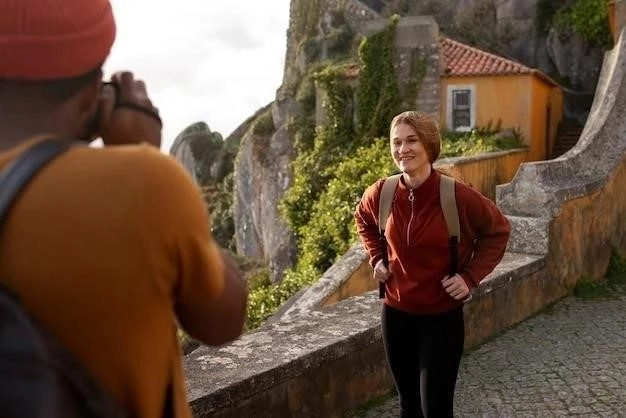
Getting to Lomé
As the vibrant capital of Togo, Lomé serves as a major transportation hub, welcoming travelers from across the globe. Whether arriving by air, land, or sea, several options exist for reaching this West African gem, each offering its own unique perspective on the journey to Togo.

Lomé-Tokoin International Airport (LFW), located just a few kilometers from the city center, serves as the primary gateway for international travelers. The airport receives regular flights from major airlines, connecting Lomé to destinations across Africa, Europe, and other parts of the world. Upon arrival, taxis and private car services are readily available for transportation to your chosen accommodation.
For those traveling from neighboring countries, overland travel by bus or shared taxi (known as “bush taxis”) is a common and often more adventurous option. Several bus companies operate routes to Lomé from neighboring Benin, Ghana, and Burkina Faso, offering an opportunity to witness the changing landscapes and experience the warmth of local hospitality along the way.
While less common for tourists, Lomé also has a port that receives occasional cargo and passenger ships. However, traveling by sea to Lomé is generally not recommended for those on a tight schedule, as schedules can be irregular and journeys often lengthy.
Getting Around Lomé
Navigating the bustling streets of Lomé is an adventure in itself, offering a glimpse into the city’s vibrant energy and the daily rhythms of its inhabitants. While the city offers a variety of transportation options, each with its own quirks and advantages, understanding the local transport network is essential for traversing Lomé with ease and efficiency.
For those seeking a cost-effective and immersive experience, shared taxis, locally known as “zemidjan,” are ubiquitous throughout Lomé. These motorcycle taxis, often distinguished by their brightly colored vests, provide a thrilling and efficient way to navigate the city’s often congested streets. Fares are typically negotiated upfront, and it’s advisable to agree on a price before embarking on your journey.

Conventional taxis, recognizable by their yellow color, offer a more comfortable, albeit slightly pricier, alternative to zems. Taxis can be hailed from the roadside or found at designated taxi ranks throughout the city. As with zems, it’s customary to negotiate the fare before starting your trip.
For longer journeys within the city, minibusses, known as “sodeca,” ply fixed routes and offer an economical mode of transport. These minibuses can become crowded, particularly during peak hours, but they provide an authentic glimpse into Lomé’s local life.

